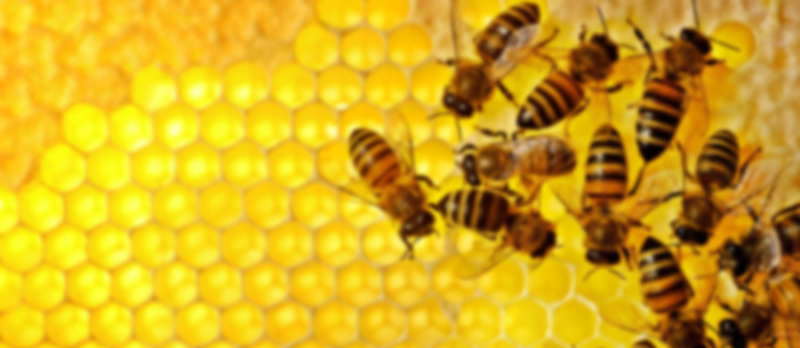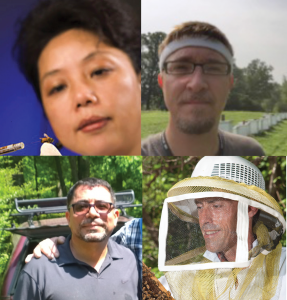By: Jay Evans
What’s Going On At The Beltsville Bee Lab?
Practical research discoveries follow a twisting path. Basic research driven by the human need to understand nature can, often years or even decades later, lead to huge advances that benefit people or the environment. Alternatively, sure-thing tests of a new product, management strategy, or breeding scheme often fail at the last moment when applied to ‘real’ life. In the column ‘Found in Translation’, I want to describe success stories in translational bee research, projects where the toil of scientists has led to ‘news you can use’ as a beekeeper. These stories will come from university, government, or industry scientists in the worldwide bee research community who have made an important and practical discovery, or who have put pieces together from others’ research to make a substantial advance for the bee industry. While I promise not to over-rate home team advances by USDA, this first month I have the honor of introducing the scientists at the USDA Agricultural Research Service Bee Research Lab in Beltsville, MD and describing how they are working to address issues facing bees. Next month will begin explorations of impactful research from around the bee world.
USDA scientists have conducted bee research near Washington DC for over 100 years, and at the Beltsville Agricultural Research Center since the 1930s. Currently, the BRL is comprised of nine full-time federal employees and a team of 20+ students and collaborators from the U.S., England, Thailand, Spain, and China. The mission of the BRL is to provide innovative tools and insights for building and maintaining healthy honey bee populations. Research is focused on interactions between parasites, chemical stress and nutrition and on the defenses mounted by bees and beekeepers toward these threats. The BRL also runs the longstanding Bee Disease Diagnostic service (currently headed by Mr. Samuel Abban), an effort that both drives our disease research and benefits beekeepers. Below are brief summaries of four main research directions at the BRL.
Dr. Judy Chen studies honey bee disease processes and interactions between honey bee workers and their major pathogens and parasites. Her main focus is on viruses and nosema. Her work has defined the roles of Varroa mites in vectoring virus infections and clarified how viruses are transmitted among bees and colonies. She is also determining how nosema affects bee health and how specific honey bee proteins can be used to fight this disease. Judy hopes that her next translational product will be novel agents and therapeutic strategies for bee disease diagnosis and treatment.
Dr. Steven Cook carries out field and lab experiments aimed at identifying the impacts of chemical, disease and environmental stress on bees and making bees more resilient in the face of these threats to their health. Aligned with these aims, Steve’s next translational product will consist of a dietary supplement that will reduce the stress honey bee colonies experience overwinter, and make them stronger and poised for explosive growth in Spring. He has also built a research team focused on Varroa mite development and physiology, and designing novel controls for this major honey bee pest.
Dr. Miguel Corona conducts research on honey bee nutrition and queen health. He is especially interested in improved protein and lipid nutrition, identifying deficiencies that cause worker bees to mature too quickly to the forager stage, thereby becoming short-lived and more susceptible to disease. Miguel’s mantra is ‘fly soon die soon’. Miguel also looks for ways to improve and extend queen longevity and fertility, adding to work by former BRL scientist Dr. Jeff Pettis. He has found that subtle changes in nutrition during larval development have an important impact on queen fertility. His leading beekeeper-ready candidate is a nutritional supplement that restores pollen deficiencies to ensure normal bee behavioral development of the bee and enable them to defeat diseases and harmful chemicals.
Jay Evans is Research Leader for the group. His research is focused on the genetics and control of honey bee disease. He has developed genetic resources for each of the major bee disease threats and has carried out research showing the effectiveness of bee immunity and management tools for reducing disease levels and bee stress. He hopes in the next year to push forward projects using natural compounds for reducing bee disease impacts, while continuing collaborative work on the genomes of bees, mites, and hive beetles.
All four of the BRL scientists work together and with talented worldwide colleagues to determine interactions between pesticides, nutrition and disease and to look for ways to improve bee health in the face of these threats. As with all applied bee researchers, they want to decrease impacts these threats have had on bees, beekeepers, pollination, and the environment. More information is available at http://www.ars.usda.gov/northeast-area/beltsville-md/beltsville-agricultural-research-center/bee-research-laboratory/.











